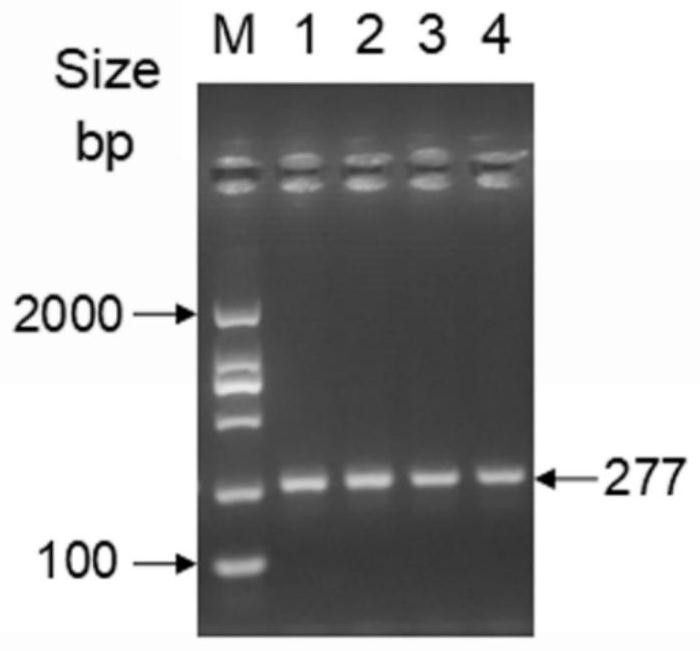CAPS molecular marker closely linked with sepal color trait gene of solanum melongena and preparation method of molecular marker
A technology of molecular markers and color genes, which is applied in the fields of molecular biology and eggplant breeding, can solve the problems of no DNA molecular marker reports, no clear genetic mechanism, etc., and achieve the effects of convenient and fast detection, stable results, and improved selection efficiency
- Summary
- Abstract
- Description
- Claims
- Application Information
AI Technical Summary
Problems solved by technology
Method used
Image
Examples
Embodiment 1
[0030] Example 1: Construction and DNA Extraction of Eggplant Sepal Color Genetic Population
[0031] (1) Group construction
[0032] In the embodiment of the present invention, eggplant varieties GP05 (green sepal eggplant) and PP05 (purple sepal eggplant) are used as parents, and hybridization (orthogonal) and selfing are carried out in spring and autumn greenhouses to prepare genetic populations, namely P1, P2, and F2. The genetic population was set in the greenhouse at the same time, 30 strains of P1, P2, and Fl were not segregated, and 240 strains of F2 were isolated, and they were cultivated and managed conventionally.
[0033] Eggplants from both parents and genetic populations reached commercial maturity and were identified after harvest. According to the eggplant germplasm resource description specification, two eggplant pairs that reached commercial maturity, conformed to the characteristics of the strain, and developed normally were harvested from each plant. Photo...
Embodiment 2
[0037] Example 2: Searching for green sepal eggplant-associated regions by high-throughput sequencing
[0038] (1) High-throughput sequencing: Sepal color-related SNP screening: Sequencing using the Hiseq2500 sequencing platform, the extracted eggplant parents GP05, PP05, and eggplant green sepal progeny mixed pool BSAg, eggplant purple sepal progeny mixed pool BSAp were high-throughput Quantitative sequencing.
[0039] (2) Sequencing raw sequence processing: the raw image data files obtained by high-throughput sequencing are converted into raw sequencing sequences (raw data) through basecalling analysis. Then, according to certain rules, filter the original sequencing sequence obtained by sequencing. The main criteria are as follows: 1) remove the reads pair with adapter; 2) when the ratio of N in the single-end sequencing read is greater than 10%, it needs to be removed For reads; 3) When the number of low-quality (less than 5) bases in the single-end sequencing read exceed...
Embodiment 3
[0043] Example 3: Design and synthesis of polymorphic primers
[0044] According to the 42 scaffold sequence features obtained by high-throughput sequencing that may be associated with green sepal traits, 34 pairs of Caps primers were designed, and BglII, HindIII, MboI, NcoI, NdeI and XbaI were selected as restriction enzymes for identification. Use these primers to perform PCR amplification on the two parental DNAs. After the PCR amplification products are digested with restriction endonucleases, and then go through agarose gel electrophoresis and staining, the size of the bands is discriminated and polymorphisms are screened. sex primers. The primer sequences were synthesized by Beijing Aoke Biotechnology Co., Ltd., and the restriction enzymes were purchased from NEB Company.
PUM
 Login to View More
Login to View More Abstract
Description
Claims
Application Information
 Login to View More
Login to View More - R&D
- Intellectual Property
- Life Sciences
- Materials
- Tech Scout
- Unparalleled Data Quality
- Higher Quality Content
- 60% Fewer Hallucinations
Browse by: Latest US Patents, China's latest patents, Technical Efficacy Thesaurus, Application Domain, Technology Topic, Popular Technical Reports.
© 2025 PatSnap. All rights reserved.Legal|Privacy policy|Modern Slavery Act Transparency Statement|Sitemap|About US| Contact US: help@patsnap.com



